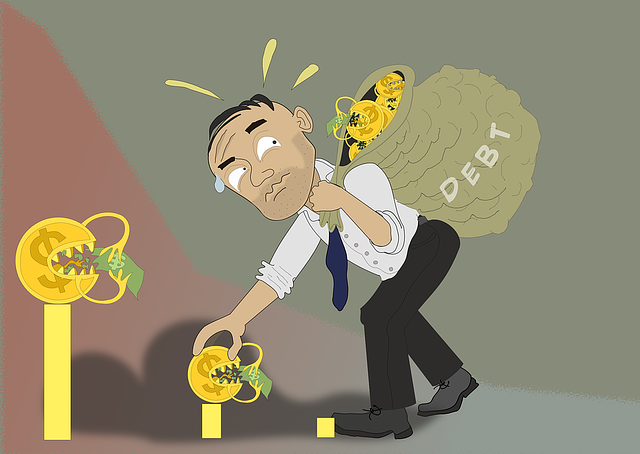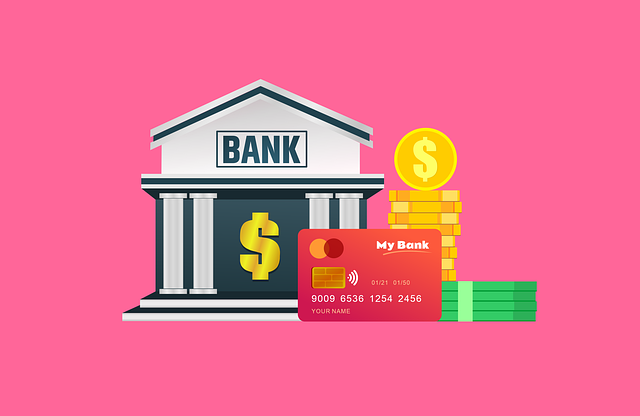Debt consolidation loans streamline multiple high-interest debts into a single, lower-rate loan, simplifying repayment and saving money on interest. This strategy offers easier budgeting, cost savings, and personalized plans for long-term financial stability and freedom from debt. Bankruptcy provides legal relief but requires expert consultation; comparing options like consolidation ensures sustainable solutions for managing and eliminating debt.
Are you burdened by overwhelming debt? Exploring debt relief strategies is a crucial step towards financial freedom. This article guides you through two popular options: debt consolidation loans and bankruptcy. By understanding these methods, you can make an informed decision to simplify your finances. Debt consolidation loans offer a structured approach to repaying debts, while bankruptcy provides a fresh start by eliminating certain types of debt. Discover how these strategies can lead to financial freedom and choose the best path for your unique circumstances.
- Understanding Debt Relief Strategies
- Debt Consolidation Loans: How They Work
- Financial Freedom Through Bankruptcy
- Comparing Options for Long-Term Solutions
Understanding Debt Relief Strategies

Debt relief strategies are essential tools for individuals and families looking to regain financial freedom from overwhelming debt burdens. Two commonly discussed approaches are debt consolidation and bankruptcy, each with its own set of benefits and drawbacks. Debt consolidation loans involve combining multiple high-interest debts into a single loan with a lower interest rate, making it easier to manage payments by simplifying the repayment process and potentially lowering monthly payments. This strategy can help individuals focus on paying off their debt more efficiently while saving money on interest charges.
When considering debt relief, it’s crucial to compare different debt consolidation plans to find one that suits your financial situation best. Lowering monthly payments is a significant advantage, as it allows for more manageable repayments without the stress of multiple due dates and varying interest rates. Ultimately, understanding these strategies and evaluating them based on your unique circumstances can pave the way for a fresh start and financial stability.
Debt Consolidation Loans: How They Work

Debt Consolidation Loans: Unlocking Financial Freedom
One popular strategy to overcome overwhelming debt is through debt consolidation loans. These financial tools allow individuals to combine multiple debts into a single, more manageable loan. The process typically involves taking out a new loan with a lower interest rate than your existing debts, which are then paid off in full. By doing so, you simplify your repayment schedule and potentially reduce the overall cost of your debt. This approach offers several advantages, including easier budgeting as you now have just one payment to manage each month.
With a debt consolidation loan, you can focus on building financial stability and freedom. Many lenders offer personalized plans tailored to individuals’ unique financial situations, making it accessible for those seeking long-term debt management. By comparing different debt consolidation plans, borrowers can find the best terms and conditions, ensuring they make informed decisions about their financial future.
Financial Freedom Through Bankruptcy

For many individuals burdened by overwhelming debt, bankruptcy can be a powerful tool to achieve financial freedom. This legal process allows debtors to discharge or reorganize their debts, providing a fresh start and the opportunity to rebuild their financial health. One of the key benefits of bankruptcy is its ability to offer immediate relief from collection efforts. Once filed, creditors are temporarily prohibited from contacting you about the debt, giving you precious time to assess your options.
Bankruptcy can also serve as a means to fix high-interest rates and consolidate my loans, allowing for better management and potentially lower monthly payments. By restructuring the debt, individuals can gain control over their finances and work towards eliminating their debt burden completely. While bankruptcy offers a new beginning, it’s essential to consult with financial experts or debt consolidation specialists who can guide you through the process and help determine if it’s the right solution for your unique circumstances.
Comparing Options for Long-Term Solutions

When considering long-term debt relief, it’s crucial to compare options that offer sustainable solutions. While bankruptcy provides a fresh start, it carries significant legal and financial implications. On the other hand, debt consolidation loans streamline payments by combining multiple debts into one manageable loan with potentially lower interest rates. This approach can simplify financial management and accelerate payoff, paving the way for true financial freedom.
Debt consolidation myths busted aside, this strategy empowers individuals to gain control over their finances. Successful debt payoff strategies often involve a combination of budget optimization and strategic debt reduction methods. Exploring debt management solutions like consolidation can be a game-changer, enabling folks to move beyond overwhelming debt and embrace a brighter financial future.
When considering debt relief, both debt consolidation loans and bankruptcy offer viable paths to financial freedom. Debt consolidation loans provide a structured approach to managing debt by combining multiple payments into one, simplifying repayment. Bankruptcy, while more drastic, can eliminate qualifying debts entirely, offering a fresh start. The best option depends on individual circumstances. By understanding these strategies, individuals can make an informed decision that aligns with their long-term financial goals and moves them closer to achieving true financial freedom.
